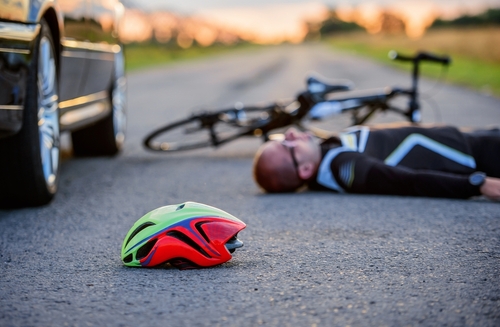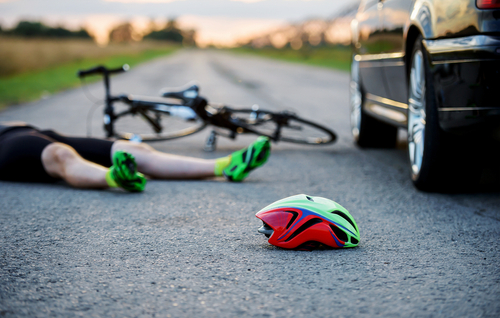
When Safety Gear Meets Legal Reality: Insights from a Bicycle Accident Lawyer in Tulsa
Nearly 1,000 bicyclists die annually on U.S. roads in crashes involving motor vehicles, with approximately 120,000 emergency department visits for non-fatal crash-related injuries. If you’ve been struck while cycling without a helmet, you might worry that insurance companies will use this against you to slash or deny your compensation. The reality is more nuanced: while Oklahoma doesn’t require adults to wear helmets, your choice not to wear one could still affect your injury claim, particularly if you suffered head injuries. Understanding how comparative negligence principles apply to helmet use helps you protect your rights and pursue fair compensation after a devastating bicycle accident.
💡 Pro Tip: Document all your injuries, not just head trauma – this helps demonstrate which injuries would have occurred regardless of helmet use, strengthening your overall claim.
Don’t let insurance companies cut your rightful compensation over a helmet dispute. Connect with Cain Law to navigate the complexities of your case with confidence. Reach out at 855-759-7874 or contact us today to ensure your rights are protected.

Understanding Oklahoma’s Comparative Negligence Laws and Your Rights
Oklahoma follows a modified comparative negligence system, which means you can recover damages as long as your fault doesn’t reach or exceed 51%. When working with a bicycle accident lawyer in Tulsa, it’s crucial to understand that insurance companies may argue your failure to wear a helmet contributed to your injuries, potentially reducing your compensation. However, this defense typically only applies to head injuries specifically – not to broken bones, internal injuries, or other trauma unrelated to helmet protection. The burden falls on the defendant to prove that wearing a helmet would have prevented or lessened your specific injuries, which requires expert testimony and detailed accident reconstruction.
💡 Pro Tip: Request copies of all police reports and witness statements immediately – these often contain crucial details about the accident dynamics that can counter helmet-related blame.
From Accident to Settlement: What to Expect in Your Bicycle Injury Case
Pursuing compensation after a bicycle accident involves several critical stages, each with specific requirements and opportunities to strengthen your case. Understanding this timeline helps you prepare for what lies ahead while ensuring you don’t miss important deadlines that could jeopardize your claim. Here’s how the process typically unfolds when you work with a bicycle accident lawyer in Tulsa:
- Immediate Medical Care and Documentation (Days 1-7): Seek emergency treatment and document all injuries, regardless of helmet use. Medical records establish the severity and causation of injuries.
- Initial Investigation (Weeks 1-4): Your attorney gathers evidence, interviews witnesses, and analyzes how helmet use might factor into liability calculations under Oklahoma law.
- Insurance Company Response (Weeks 4-12): Insurers investigate and often argue comparative fault. A meta-analysis of bicycle helmet effectiveness in preventing injuries shows helmets reduce head injury by 48%, which insurers may cite.
- Expert Evaluation (Months 2-6): Medical and accident reconstruction experts assess whether a helmet would have prevented your specific injuries – crucial for countering comparative negligence claims.
- Settlement Negotiations (Months 6-12): Most cases resolve through negotiation, where your attorney counters helmet-based defenses with evidence of the driver’s primary negligence.
- Litigation if Necessary (Months 12-24+): If settlement fails, your case proceeds to trial where a jury decides fault percentages and compensation amounts.
💡 Pro Tip: Oklahoma’s two-year statute of limitations for personal injury claims starts from the accident date – don’t delay seeking legal counsel while evidence is fresh.
Maximizing Your Recovery with Strategic Legal Representation
When insurance companies attempt to reduce your compensation based on helmet non-use, having an experienced bicycle accident lawyer in Tulsa becomes essential for protecting your full recovery rights. At Cain Law, we understand Oklahoma’s specific approach to comparative negligence and develop strategies to minimize any fault attribution related to helmet use. This includes demonstrating the driver’s negligent behaviors – such as texting, speeding, or failing to yield – were the primary cause of your injuries. We also work with medical experts who can testify about which injuries would have occurred regardless of protective gear, ensuring you receive fair compensation for all damages caused by the at-fault driver’s negligence.
💡 Pro Tip: Keep a daily journal documenting your pain levels, mobility limitations, and how injuries affect your daily activities – this personal account strengthens both economic and non-economic damage claims.
The Science Behind Helmet Defense Arguments
Insurance companies often cite studies showing bicycle helmets reduce serious head injury by 60% and traumatic brain injury by 53% when arguing for reduced compensation. However, understanding bicycle accident law requires recognizing the limitations of these statistics in individual cases. The same research indicates helmet effects are larger in single bicycle crashes than in collisions with motor vehicles, where the force of impact often exceeds what any helmet can reasonably protect against. Additionally, helmets were not found to have any statistically significant effect on cervical spine injuries, which are common in vehicle-bicycle collisions.
Challenging the Helmet Defense with Evidence
Your bicycle accident lawyer in Tulsa will scrutinize whether your specific head injuries fall within the protective scope of helmet design. Modern bicycle helmets are tested to withstand impacts at approximately 14 mph – far below typical vehicle speeds on Tulsa streets like Yale Avenue or Riverside Drive. When a car strikes a cyclist at 35-45 mph, the protective capacity of any helmet becomes limited. This scientific reality helps counter simplistic arguments that helmet use would have prevented all head trauma.
💡 Pro Tip: Request your medical providers document the specific mechanics and severity of your head injuries – this technical detail helps experts testify about causation beyond helmet protection.
Calculating Damages When Comparative Fault is Involved
Understanding how comparative negligence affects your compensation requires examining both economic and non-economic damages in detail. Economic damages include all medical costs, lost income, and property damage – documented losses that remain fully compensable even with some fault attribution. A bicycle accident lawyer in Tulsa will compile comprehensive evidence of these tangible losses, from emergency room bills to long-term rehabilitation costs. Non-economic damages cover pain and suffering, loss of enjoyment of life, and permanent impairments – subjective losses that require careful presentation to maximize recovery despite any helmet-related fault arguments.
Real-World Impact of Fault Percentages
If a jury finds you 20% at fault for not wearing a helmet while the driver is 80% at fault for running a red light, your $100,earnvable becomes $80,000. However, this reduction only applies if the defendant proves helmet use would have prevented or lessened your injuries. Many bicycle accident victims recover full compensation when their attorneys successfully demonstrate that the severity of impact made helmet use irrelevant to the outcome.
💡 Pro Tip: Document all activities you can no longer enjoy due to your injuries – from cycling itself to work duties – as these quality of life impacts significantly affect non-economic damage calculations.
Building Your Strongest Case Despite Helmet Non-Use
Successfully defending against helmet-based comparative fault arguments requires a comprehensive approach to evidence gathering and presentation. Your attorney will focus on establishing the driver’s clear negligence while demonstrating that your injuries resulted from their dangerous actions rather than your safety equipment choices. This includes analyzing factors like vehicle speed, point of impact, and the physics of the collision to show how the crash dynamics created forces beyond any helmet’s protective capacity.
Key Evidence That Strengthens Your Position
Traffic camera footage, witness statements, and accident reconstruction data become crucial when countering helmet defense arguments. A meta-analysis of bicycle helmet effectiveness in preventing injuries provides scientific backing, but individual crash circumstances often tell a different story. Your bicycle accident lawyer in Tulsa will gather evidence showing the driver’s negligent behaviors – whether distracted driving, excessive speed, or failure to maintain safe passing distance – created an unavoidable hazard regardless of your protective gear choices.
💡 Pro Tip: Take photos of the accident scene from multiple angles if possible, including skid marks, debris patterns, and sight lines – these details help reconstruction experts analyze crash dynamics.
Frequently Asked Questions
Common Concerns About Helmet Use and Compensation
Bicycle accident victims often worry that not wearing a helmet automatically disqualifies them from compensation or drastically reduces their recovery. Understanding how bicycle accident law actually applies to these situations helps ease concerns and clarify your rights under Oklahoma’s legal framework.
💡 Pro Tip: Bring all medical records and bills to your attorney consultation – complete documentation helps accurately assess how helmet use factors into your specific case.
Next Steps After Your Bicycle Accident
Taking prompt action protects both your health and legal rights. Beyond seeking immediate medical care, documenting the accident scene, gathering witness information, and consulting with a bicycle accident lawyer in Tulsa ensures you’re positioned for maximum recovery despite any helmet-related defenses.
💡 Pro Tip: Don’t give recorded statements to insurance companies before consulting an attorney – seemingly innocent comments about helmet use can be twisted to reduce your compensation.
1. Will I automatically lose my case if I wasn’t wearing a helmet during my bicycle accident?
No, you won’t automatically lose your case. Oklahoma doesn’t require adult cyclists to wear helmets, and you can still recover compensation even if partially at fault. Under Oklahoma’s modified comparative negligence rule, you can recover damages as long as you’re less than 51% at fault. The defendant must prove that wearing a helmet would have prevented or reduced your specific injuries.
2. How much could my compensation be reduced for not wearing a helmet?
The reduction depends on whether the jury finds your helmet non-use contributed to your injuries. If you suffered only leg fractures and road rash, helmet use is irrelevant. For head injuries, reductions typically range from 10-30% of damages attributed to those specific injuries, not your entire claim. Your total fault must stay under 51% to recover any compensation in Oklahoma.
3. What evidence helps prove a helmet wouldn’t have prevented my injuries?
Medical records showing injury severity, accident reconstruction demonstrating impact forces, and expert testimony about helmet limitations all help your case. Photos of vehicle damage, witness statements about speed, and documentation of injury locations beyond the head also support arguments that protective gear wouldn’t have changed the outcome.
4. Should I admit to not wearing a helmet when talking to insurance companies?
Be truthful if directly asked, but avoid volunteering information or speculating about how helmet use might have affected your injuries. Insurance adjusters are trained to elicit statements that reduce claim values. Always consult with an attorney before giving detailed statements about the accident or your safety equipment choices.
5. How long do I have to file a bicycle accident claim in Oklahoma?
Oklahoma’s statute of limitations for personal injury claims is two years from the accident date. However, evidence degrades quickly – witnesses forget details, surveillance footage gets deleted, and physical evidence disappears. Contact an attorney as soon as possible to preserve crucial evidence and protect your rights to full compensation.
Work with a Trusted Bicycle Accidents Lawyer
Navigating the complexities of comparative negligence and helmet defense arguments requires experienced legal guidance. A skilled attorney understands how to present evidence that minimizes fault attribution while maximizing your recovery for both economic and non-economic damages. Whether your accident occurred on busy commercial corridors or quiet residential streets, the right legal representation ensures insurance companies can’t unfairly reduce your compensation based on helmet non-use. When selecting counsel, look for proven experience with bicycle accident cases, familiarity with Oklahoma’s specific comparative fault rules, and a track record of overcoming helmet-based defenses to secure fair settlements and verdicts for injured cyclists.
Get ahead of any legal hurdles and ensure your compensation isn’t unjustly minimized over helmet non-use. With Cain Law by your side, you can confidently tackle the challenges in your bicycle accident case. Call 855-759-7874 or contact us today to safeguard your rights.

